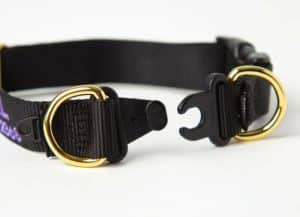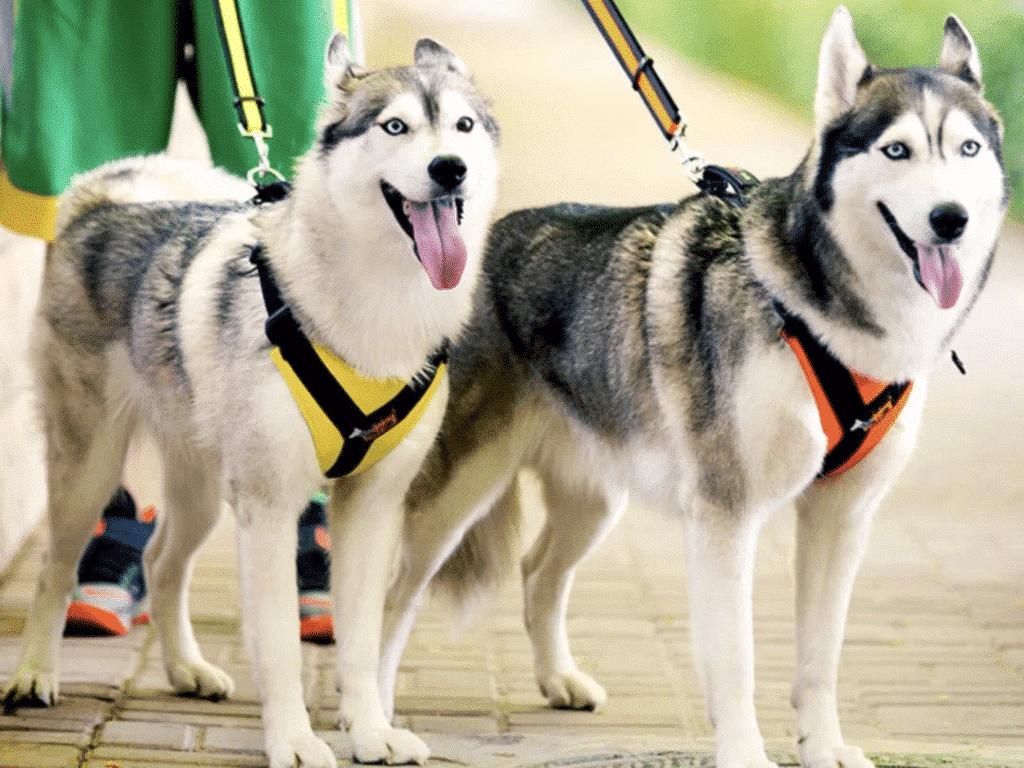Many beginners may hesitate when choosing a dog leash. Today, let’s talk about the classification of collars and harnesses, and learn how to choose a dog harness.
How to choose a dog harness?4 principles are enough!
- Principle 1: Choose a Y-shaped dog harness.
There are various organs inside dogs’ necks, and if only one strap to tie them, it can cause damage to the dog’s neck. Choosing a Y-shaped dog harness can reduce the pressure on the dog’s neck.
- Principle 2: The rope cannot tie a knot.
Choose dog leashes that are not easily knotted to avoid accidents during walking and ropes that are not easily knotted are also more convenient to store.
- Principle 3: Not easy to break free.
Choose a dog harness that is not easy to break free to prevent dogs from escaping when excited or startled.
- Principle 4: Do not excessively rub the skin.
The material of the dog harness is also very important. Rough materials can easily rub against the skin and cause skin damage when the dog rushes forward.
When choosing a dog harness, in addition to its appearance and texture, the safety and comfort of the dog should also be the first to consider.
Dog Collar?Dog Harness?
Dog Collar
Dog collars are the most common in our daily lives and also the most time-honored in the world. People in ancient Egypt and Greece also wore collars for their dogs when they went out for a walk.
However, dog collars are not just a rope or a belt, it has many classifications.
- Ordinary strap dog collar
This is the most common dog collar on the market, usually made of nylon and leather, and the price range is wide. It mostly is fixed buckles. When the owner adjusts the degree of tightness for dogs, the dog collar will keep a fixed size.
For safety, many people also use snap-on dog collars, which will automatically open when dog fights or occur other accidents. The advantages are convenience and durability. The disadvantage is that if adjusted too tightly, the dog will feel very uncomfortable. And for dogs like French bulldogs, Peking dogs, and myrtle dogs with heads and necks the same thick, they can effortlessly slide out of these collars.

- Choke chains
Choke chains can be tightened when the dog rushes forward, it can ensure the dog’s collar does not fall off. It has a simple structure and it is also sturdy and durable.
But it can easily harm a dog’s neck, and in severe cases, it may lead to suffocation and even collapse of the trachea. For some dog breeds, it can also cause an increase in intraocular pressure and increase the likelihood of other eye diseases such as glaucoma. It is only suitable for inhibitory training of dogs under the guidance of professionals. It is generally used for large dogs with overly active personalities. It is not suitable for novice dog owners.
- Martingale Collars
It is similar to a choke chain and also has an adjustable part that tightens when the dog rushes forward. However, it does not have the same continuous tightening effect as the choke chain. The material of this dog collar is soft, and the straps are also wide.
Dog Harness
More and more dog owners will choose a dog harness for their dogs, which is less likely to cause suffocation and looks safer. But there is more than one type of dog harness.
- Dog harness with back buckle
This is the most common dog harness. The advantage is that it is not easy to loosen, the dog can move freely. The disadvantage is that this type of dog harness has almost no control and guidance function. As a dog, it just feels like something is pulling it, and just wants to rush forward.
In the past, people trained dogs to pull cars and also use these dog harnesses —— such as sled dogs.
- Dog harness with front buckle
When the dog walks ahead and tries to rush forward, the owner can tighten the leash. The front buckle design of the dog harness can cause the dog to make a “turning” movement, interrupting its forward movement.
However, this kind of dog harness can make the dog feel a bit uncomfortable when walking. For strong dogs, the control effect of this front buckle dog harness is much better than that of the back button dog harness.
- Dog leash with dog muzzle
Its principle is similar to the reins of a horse, and it can be used to train dogs. But few dogs would like to put such a thing in their mouth, and it is not suitable for long-term wear.
Finally, let’s briefly summarize.
For small dogs that are easy to control by their owners, a dog harness is always safer than a dog collar, because a dog harness is less likely to be slipped and suffer accidental injuries. Even in the back buckle style, the owner can also hold it. For large dogs, the dog collar may have better outdoor guidance and control effects. If choosing a dog harness, the front buckle style is recommended.

















